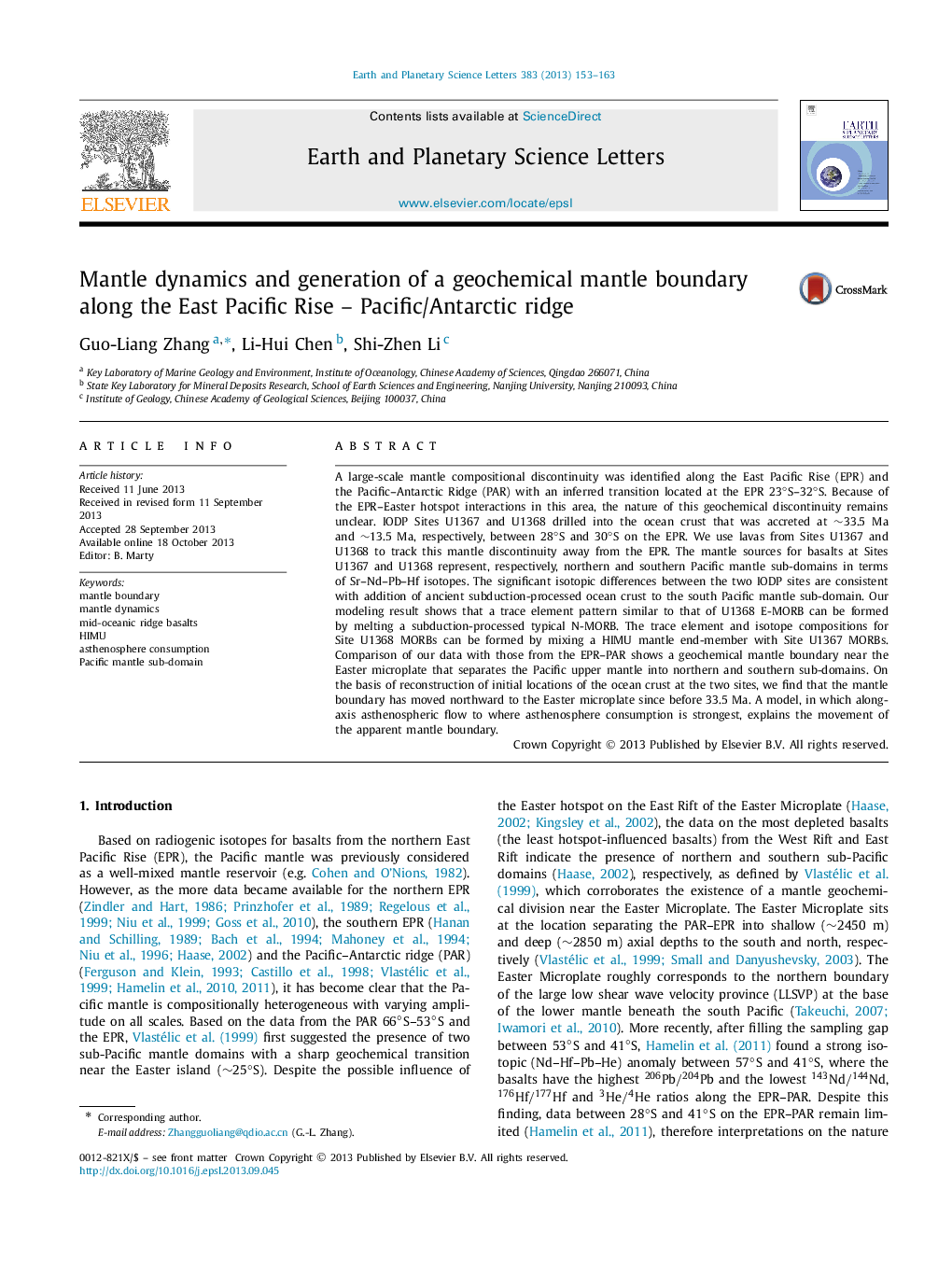| Article ID | Journal | Published Year | Pages | File Type |
|---|---|---|---|---|
| 6429857 | Earth and Planetary Science Letters | 2013 | 11 Pages |
•We back track a geochemical mantle boundary using IODP Sites U1367 and U1368.•A sharp mantle boundary has moved northward since 33 Ma to the Easter microplate.•Difference in spreading rate drove the asthenospheric flow to the Easter microplate.•The south Pacific mantle sub-domain can be explained by recycling typical N-MORB.
A large-scale mantle compositional discontinuity was identified along the East Pacific Rise (EPR) and the Pacific–Antarctic Ridge (PAR) with an inferred transition located at the EPR 23°S–32°S. Because of the EPR–Easter hotspot interactions in this area, the nature of this geochemical discontinuity remains unclear. IODP Sites U1367 and U1368 drilled into the ocean crust that was accreted at ∼33.5 Ma and ∼13.5 Ma, respectively, between 28°S and 30°S on the EPR. We use lavas from Sites U1367 and U1368 to track this mantle discontinuity away from the EPR. The mantle sources for basalts at Sites U1367 and U1368 represent, respectively, northern and southern Pacific mantle sub-domains in terms of Sr–Nd–Pb–Hf isotopes. The significant isotopic differences between the two IODP sites are consistent with addition of ancient subduction-processed ocean crust to the south Pacific mantle sub-domain. Our modeling result shows that a trace element pattern similar to that of U1368 E-MORB can be formed by melting a subduction-processed typical N-MORB. The trace element and isotope compositions for Site U1368 MORBs can be formed by mixing a HIMU mantle end-member with Site U1367 MORBs. Comparison of our data with those from the EPR–PAR shows a geochemical mantle boundary near the Easter microplate that separates the Pacific upper mantle into northern and southern sub-domains. On the basis of reconstruction of initial locations of the ocean crust at the two sites, we find that the mantle boundary has moved northward to the Easter microplate since before 33.5 Ma. A model, in which along-axis asthenospheric flow to where asthenosphere consumption is strongest, explains the movement of the apparent mantle boundary.
